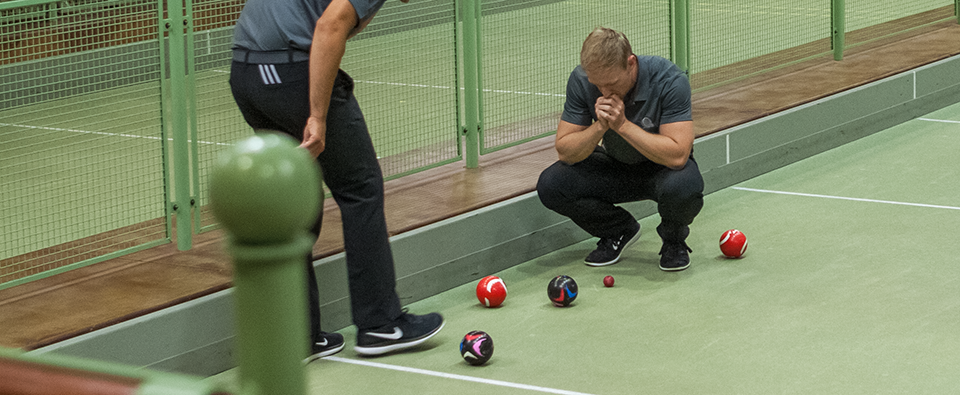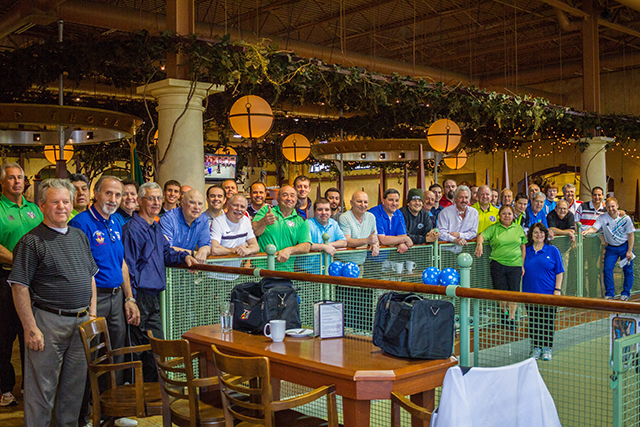Where America Goes For Fun!
WHY BOCCE
Besides some simple equipment, all that's needed to play bocce is a spirit of fun and good sportsmanship. Any time is a good time to play bocce as it's isn't tied to any seasonal conditions, and you can play all-year round.
You'll fall in love with the game as you face its athletic and strategic challenges.
Health Benefits
- Stress Relief
- Improves Coordination
- Sharpens Your Mind
- Some Light Cardio
- Improves Flexibility
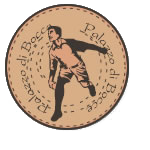
Bocce Teams
Teams will be composed of four players. Two players from each team will be permanently stationed at each end of the court, throwing two bocce balls each. At the end of each frame, the game resumes at the opposite end of the court.
Begin the match with the flip of a coin between the captains of each team. The winner of the coin flip may have the first toss of the pallino (small target ball), or choose the color of the bocce balls.
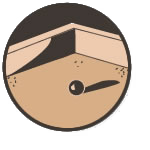
Tossing the Pallino
The play of the pallino is legal if it passes the center line of the court, is at least 3 feet off the back board and at least a foot from the side wall. If a player fails to toss the pallino properly, the opposing team will toss the pallino and put it into play. If the opposing team fails to properly toss the pallino, the pallino reverts back to the original team. Any time a player is rolling, opposing players must remain outside the court.
Starting the Bocce Game
The first ball will be thrown by the team that originally tossed the pallino. If that bocce ball hits the back board, the ball is removed from the court and the team must roll again until they have a ball in play. The other team throws until it beats (not ties) the opposing ball. This continues until both teams have used all their balls. Whenever a team gets a ball closer, it steps aside and lets the other team roll.
The team that scored last then throws the pallino to begin the next frame. Consecutive or alternating throws by teammates shall be at the option of the players. Players may use the side walls at any time. If a player rolls the wrong color bocce ball, simply replace it with the correct color when it comes to rest.
If a player rolls out of turn or plays more than two balls, the other team may leave all balls as is or remove the illegal ball from the play and return all bocce-balls to their approximate position.
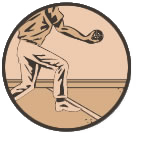
Bocce Balls That Hit the Back Board
A ball hitting the back board without hitting any other ball first is dead and must be removed from play. If it hits a ball and then the back board, all bocce balls are valid. If a thrown bocce ball does not first touch another ball and hits the back board and then strikes a stationary ball, that stationary ball shall be replaced to its approximate position. The thrown ball is removed from play.
Balls Leaving the Court
If a bocce ball leaves the court, hits the fencing and falls back into the court, it is dead and should be removed from play. All objects touched by the ball after re-entering the court should be replaced. If the pallino leaves the court, hits the fencing or rolls back past half-court, the frame is restarted.
Foul Lines
Players may step on but not over the foul line before releasing the pallino or their bocce ball.
Bocce Scoring
Only one team scores in a frame. One point is given for each ball that is closer to the pallino than the closest bocce ball of the opposing team. If at the end of any frame the closest bocce ball of each team is at equal distance from the pallino, the ball that was thrown first gets the point. Games are normally played to 12 or 15 points. The tournament host may change this number.
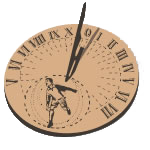
Pallino That Hit the Back Board
Once the pallino is in play, it remains in play even if it hits the back board during the game. However, if the pallino is knocked out of the court, or is knocked in front of the center-line, the frame will end and play will resume from the opposite end of the court, with the same team tossing the pallino.
Measuring & Disputes
Team captains may measure any bocce balls at any time. All disputes will be resolved by the tournament host.
Late Arrivals & Substitutions
A team not showing within ten minutes of the scheduled starting time, loses two points, and an additional two points for each five-minute increment thereafter. A team not showing up within thirty minutes of the scheduled starting time forfeits the game.
A team missing players at the start of the game may play, however, each player may only roll two bocce-balls. (A player arriving late may enter a game, but only after the completion of the game.) A team may make one substitution per game. Substitutions may only be made between frames.
Bocce Glossary
- Bocce - The name of the game and also the name of the ball the teams try to get close to the pallino.
- Pallino - The small ball that is used as the target. Sometimes referred to as the jack or pauline.
- Punta - A point shot where a person rolls their bocce to get close to the pallino.
- Raffa - Also known as a spock or hit. It is where a player attempts to knock either a bocce or the pallino out of position by throwing a ball hard at the target.
- Volo - Used mainly in international rules. A shot where the player attempts to hit the target ball without contacting the ground first.
- Open Rules - A common version of the game where the only disallowed shot is when a bocce touches the back wall without touching any other balls on the playing surface.
- International Rules - A more complicated form of bocce where shots must be called and stricter rules governing play are in effect. These rules are used in the national and world championships.
- Rule of Advantage - When an illegal play is called, the other team can decide whether to let the ball stay as it lies or put everything back to the way it was before the illegal shot took place.
- Brass Balls - A variation of bocce that uses hollow brass balls.
- CBI - (Confederatione de Bocce Internacional) This is a major governing body of bocce worldwide. They run the world championships of bocce.
- USBF - (United States Bocce Federation) This is the major governing body of bocce in the U.S. They run the national championships of bocce.
Court Dimensions
History of Bocce
Remember, You Don't Have to be Italian to Play Bocce
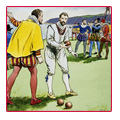
The Beginnings of the Sport
Throwing an object toward a target is considered the oldest game known to people. Graphic representations of the sport, recorded as early as 5200 B.C., have been found in Egypt and the MiddleEast. While the game of Bocce today appears quite different from the ancient version, the consistently common objective of trying to come as close as possible to a fixed target remains intact. From this early objective, the basic rules of Bocce were born. The game made its way from Egypt to Greece around 800 B.C. The version of the game resembling what we know as Bocce today was refined by early Romans, who adopted the game from the Greeks and introduced it throughout their empire. Beginning with Emperor Augustus, Bocce became the sport of statesman and rulers. The Roman influence lives on today. The game's name, Bocce, is a derivative of the Vulgate Latin bottia, which translates as "boss."
European Growth
European history is filled with references to Bocce, both good and bad. The Greek physician Ipocrates and Italian Renaissance man Galileo both noted that the game's athleticism and spirit of competition rejuvenated the body and the mind. Somewhere, the claim arose that playing Bocce had great therapeutic effect on curing rheumatism, and consequently the game enjoyed rapid growth throughout Europe as the sport of nobility and peasants alike. As Bocce's popularity grew, it began to threaten and interfere with the security of states. Kings Carlos IV and V of Spain prohibited the playing of Bocce because it took too much time away from military exercises. The Republic of Venice publicly condemned the sport in 1576, and punished players with fines and imprisonment. Perhaps the gravest condemnation of Bocce came from the Catholic Church, which officially prohibited clergy and deterred the laity from playing the game by proclaiming Bocce a means of gambling. Contrary to the rest of Europe, British nobility such as Queen Elizabeth I and Sir Francis Drake were avid players. According to lore, Sir Frances Drake refused to set out to defend England against the Spanish Armada until he finished a game of Bocce. He proclaimed, "First we finish the game, then we'll deal with the Armada!"
Bocce Comes to America
The sport first came to America with the English, with one early American playing field being Bowling Green at the southern tip of Manhattan. Though George Washington built a court and played regularly at Mount Vernon in the 1780s, the game did not flourish until the turn of the century, Italian immigrants brought their enthusiasm for the sport with them to America. During its beginnings in the U.S. there were many versions of the game. In 1947, fifteen teams in and around the town of Rivoli (Torino) organized the first Bocce "club," the first Italian League, and the first of the yearly World Bocce Championships, bringing some order to the game. This idea of "order" soon spread to the new world, though the game is still played by several different sets of "regional rules" in the United States.
